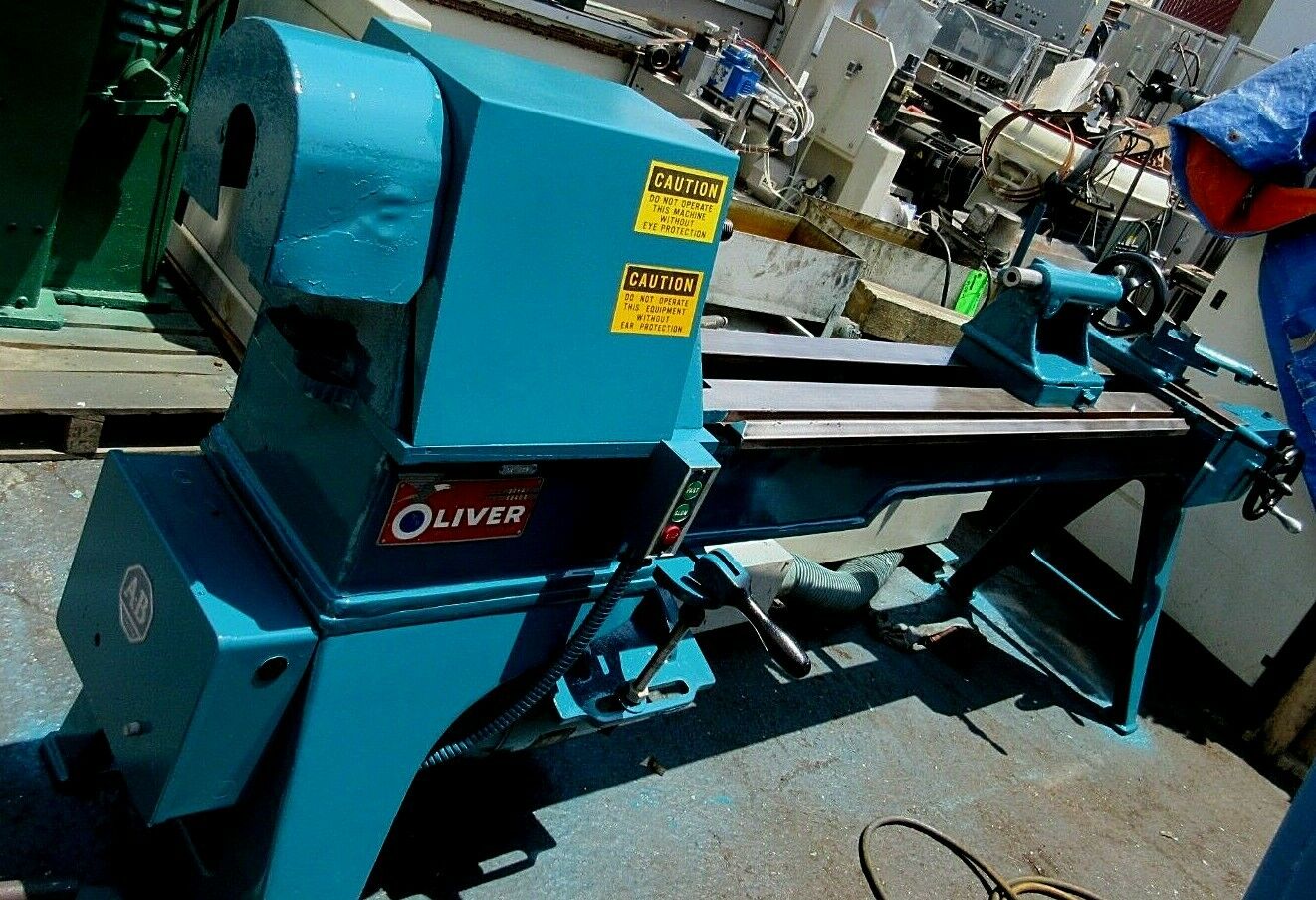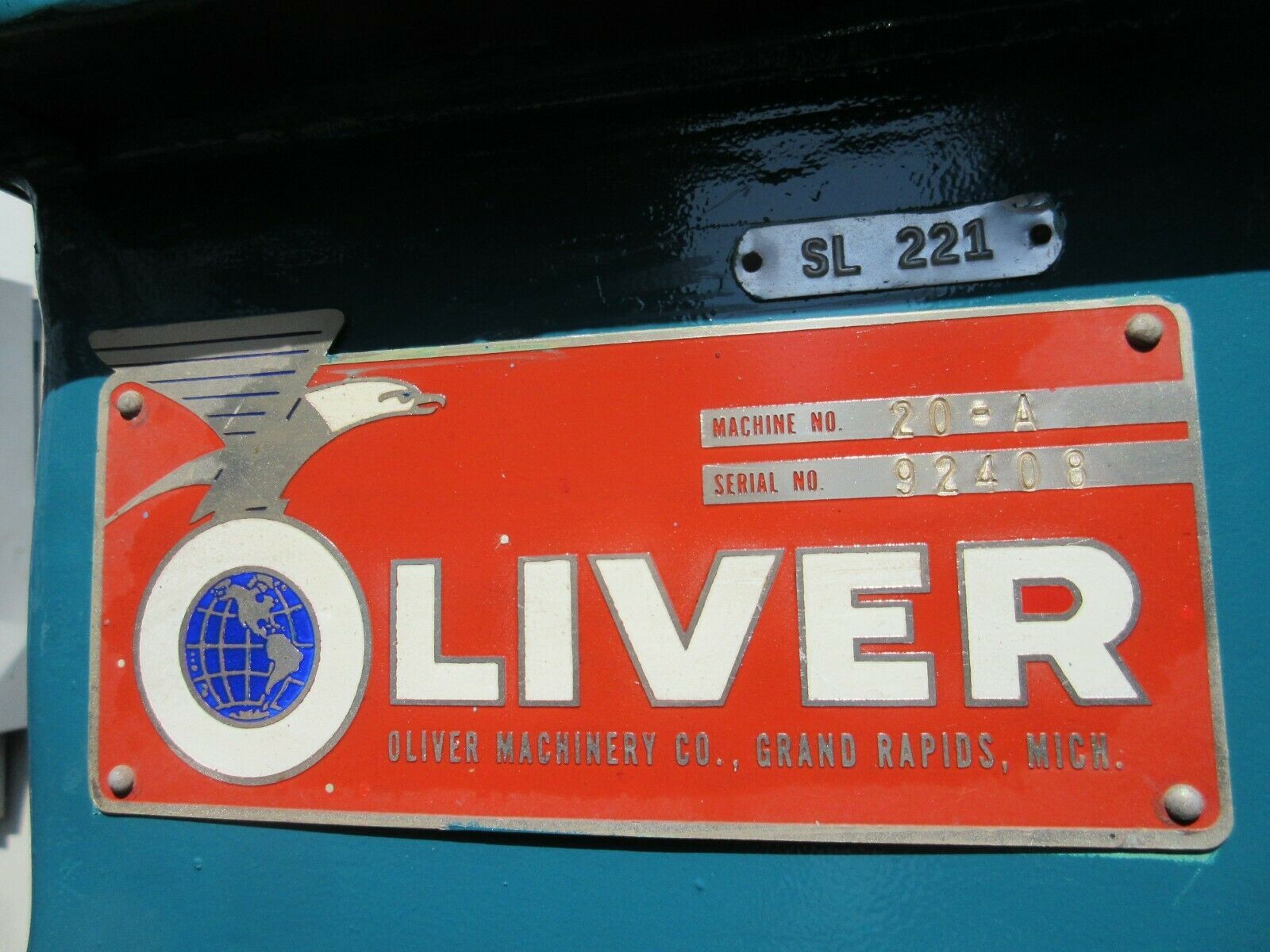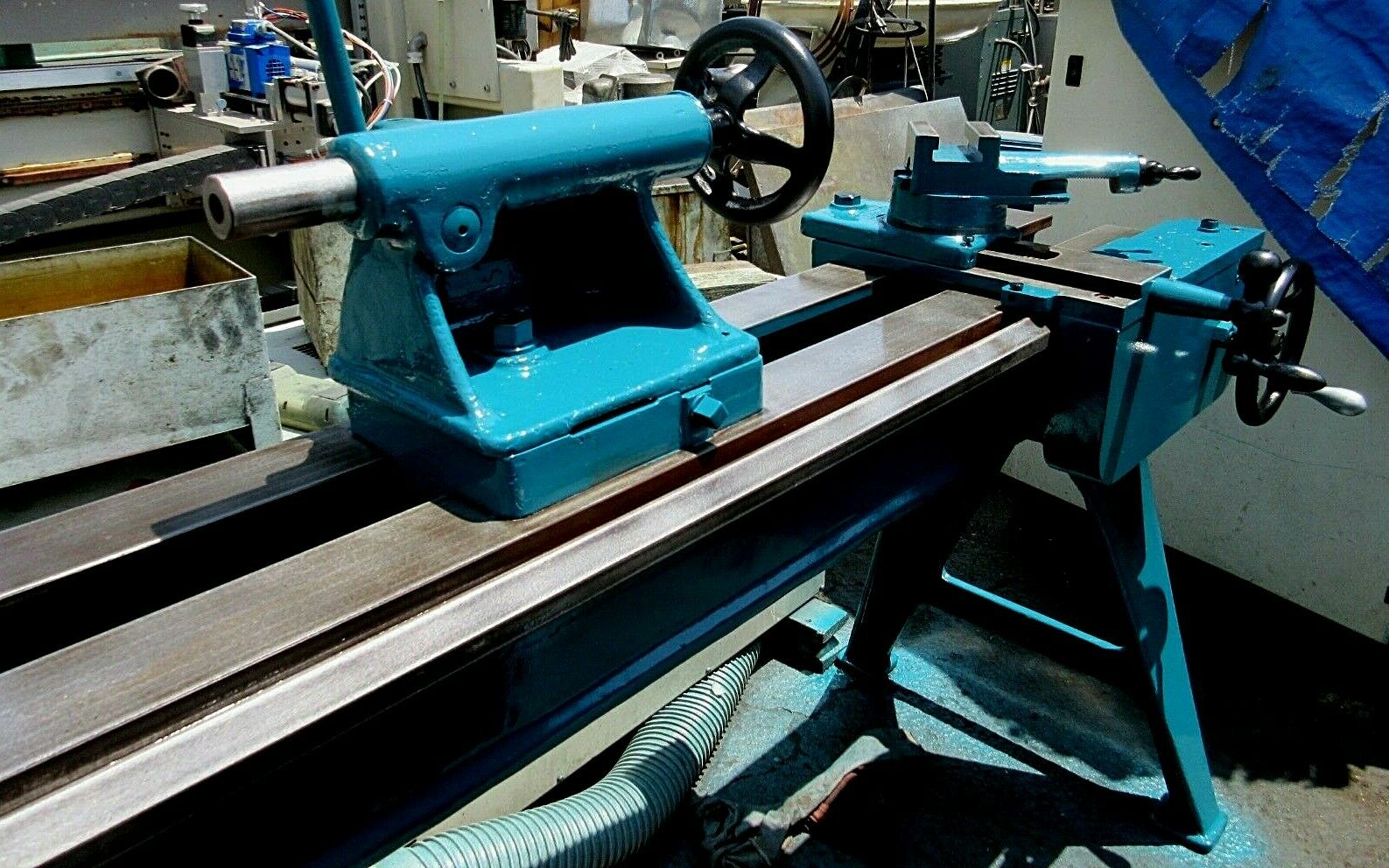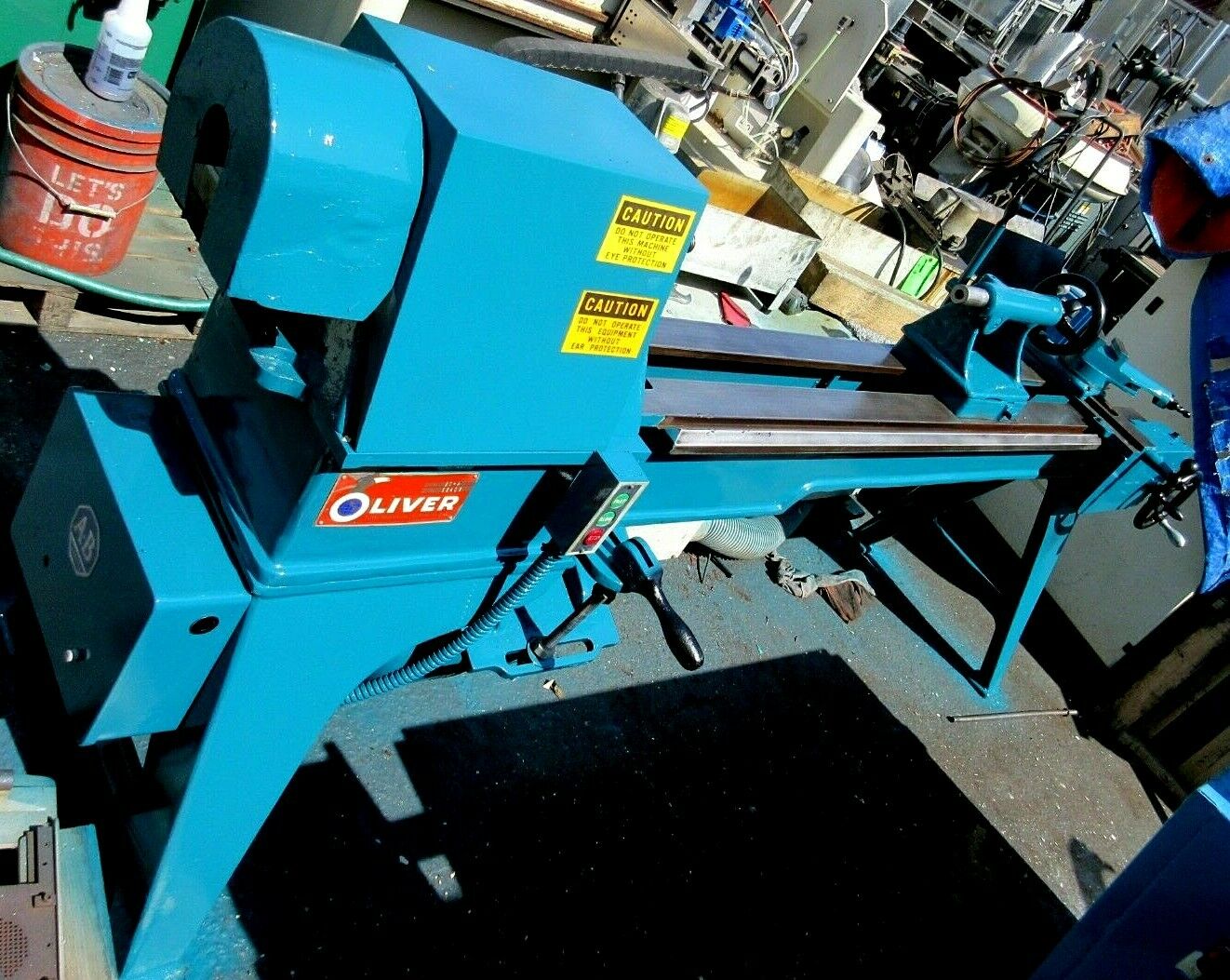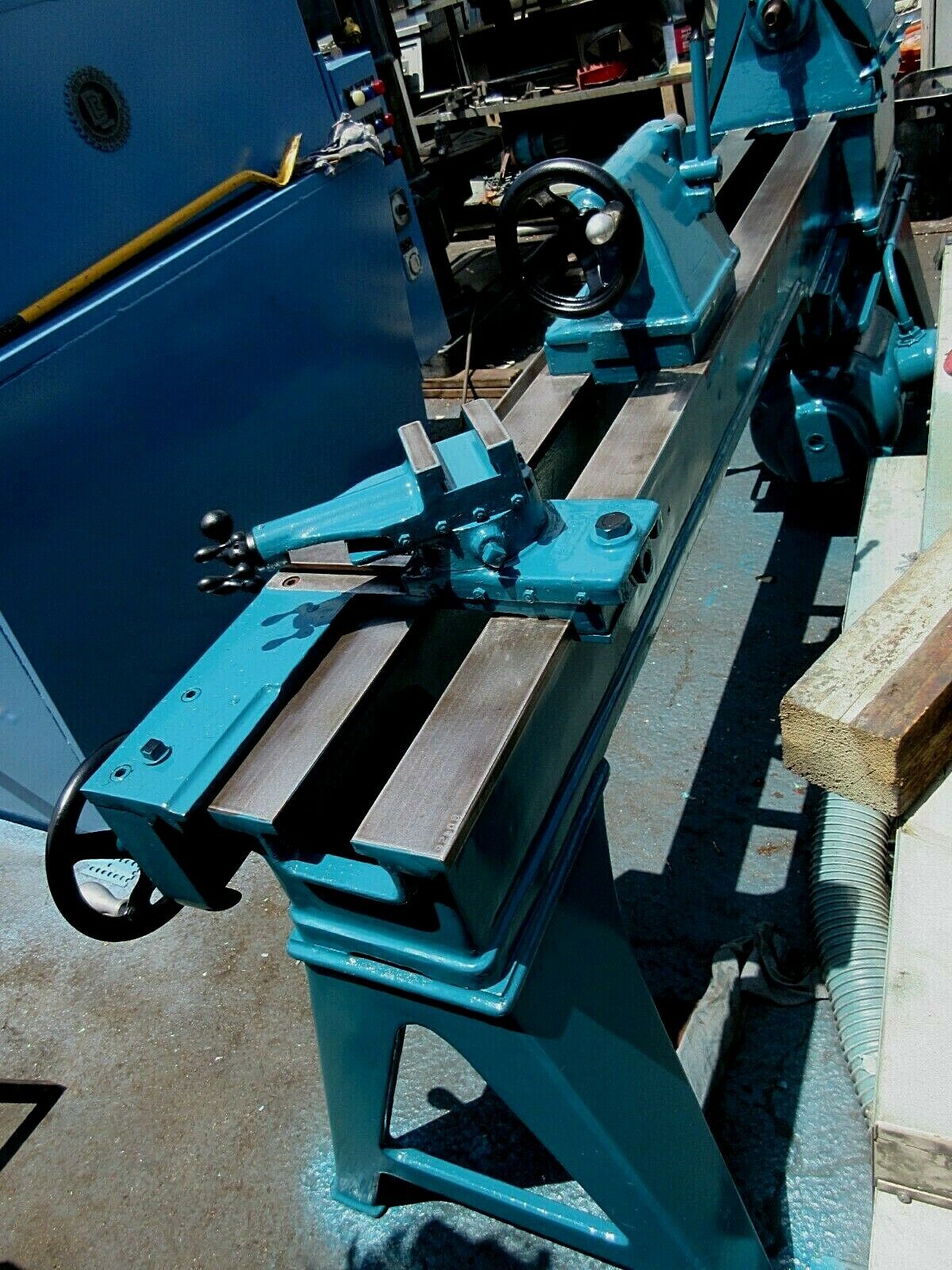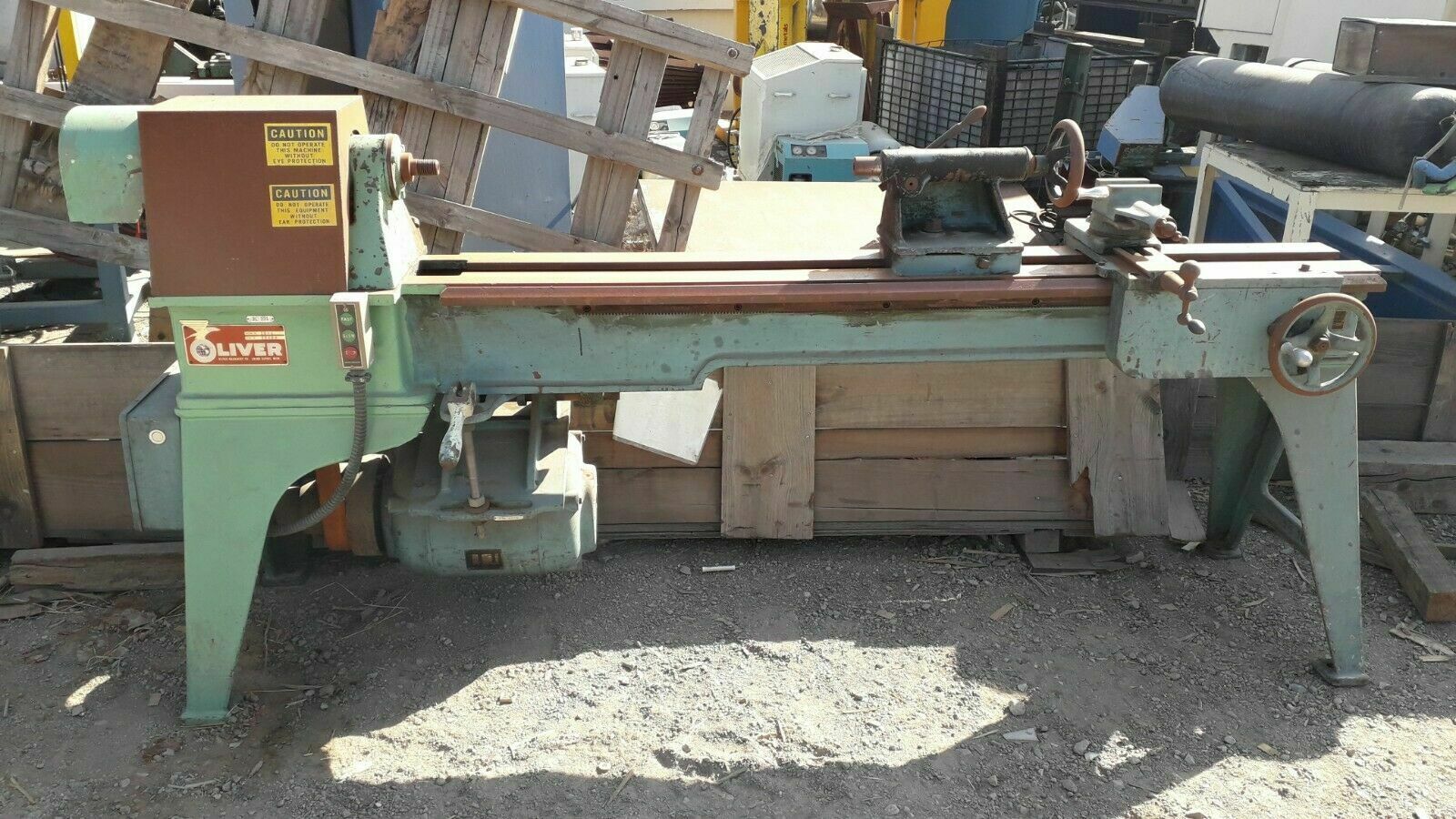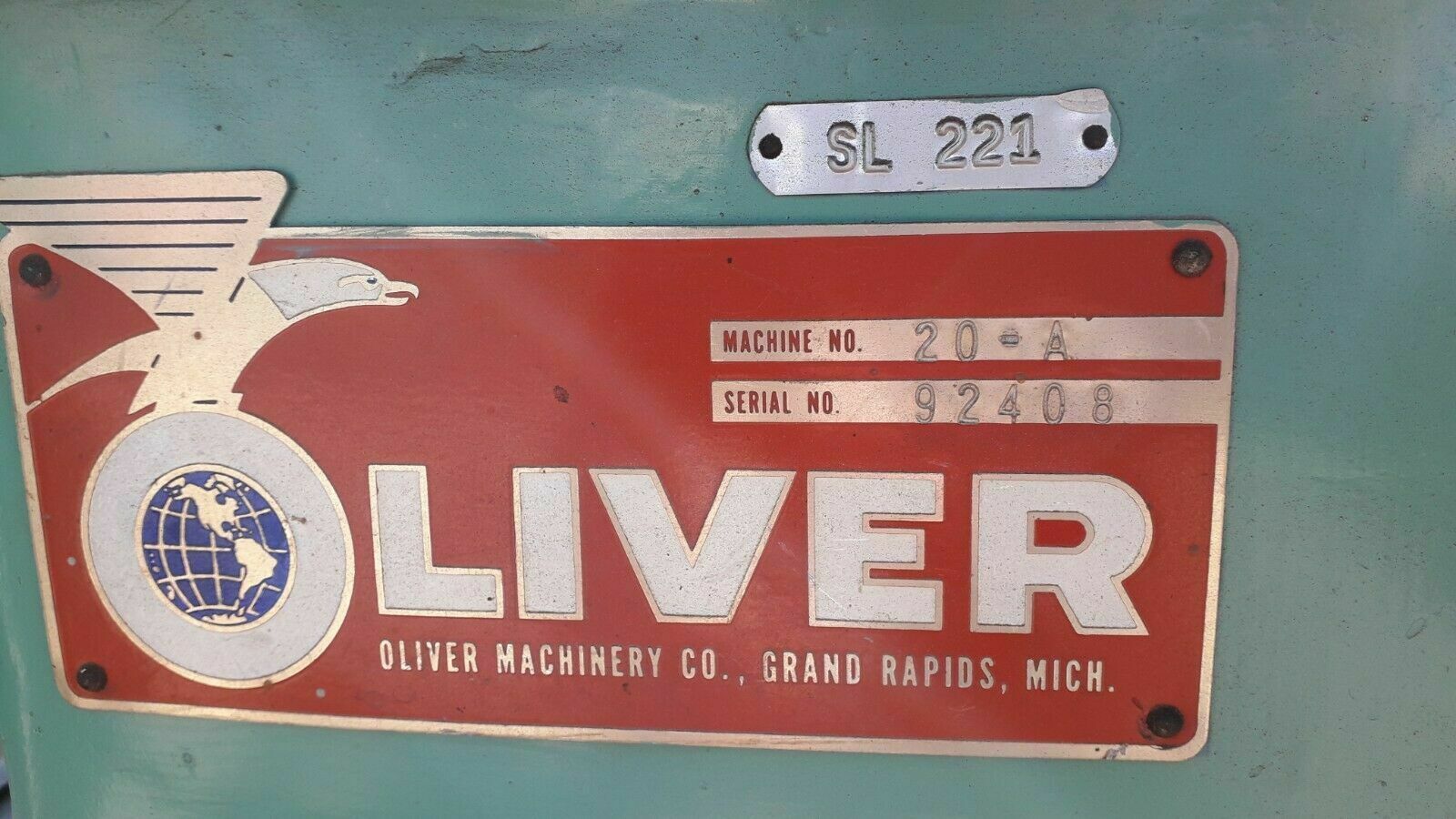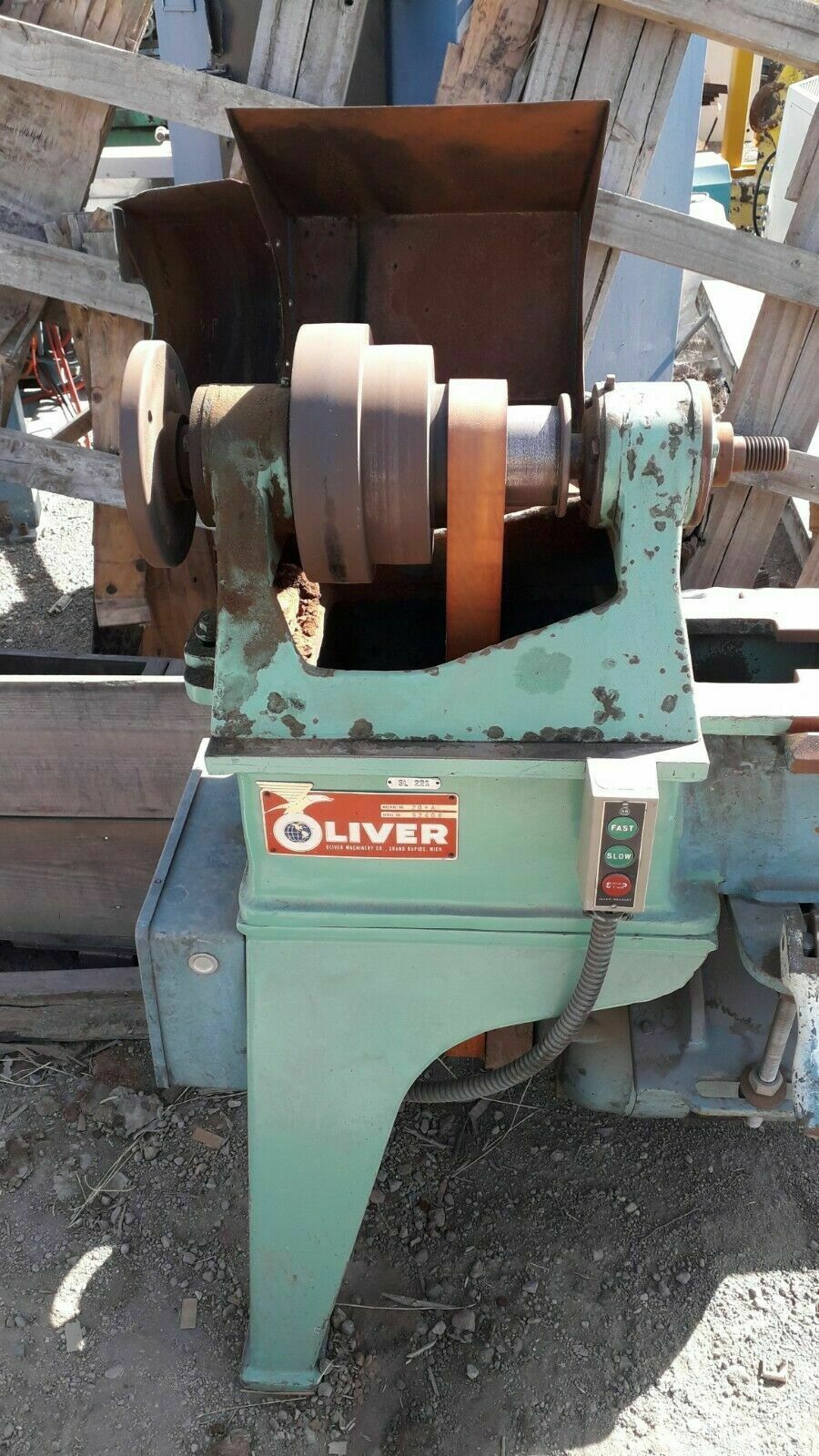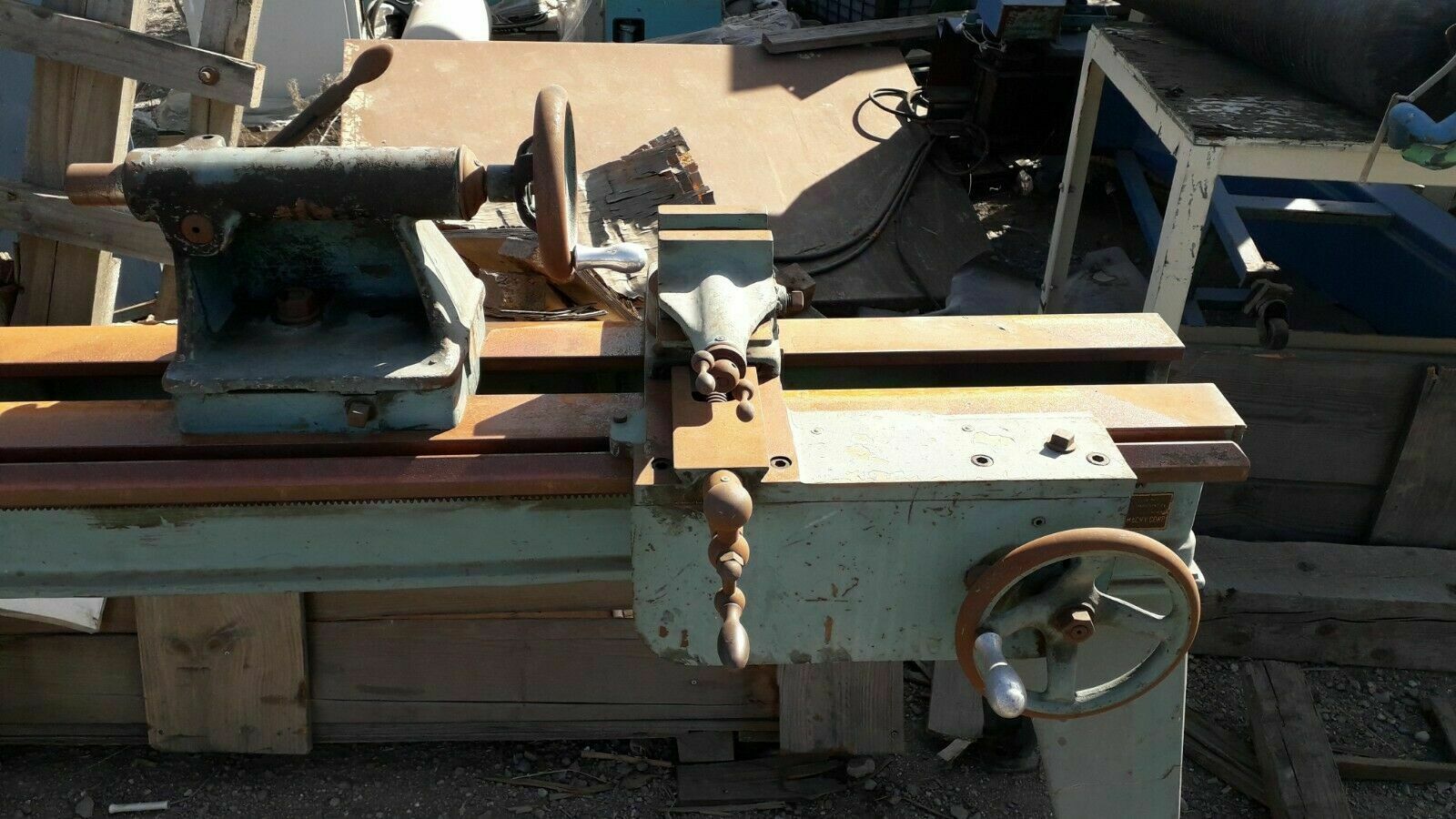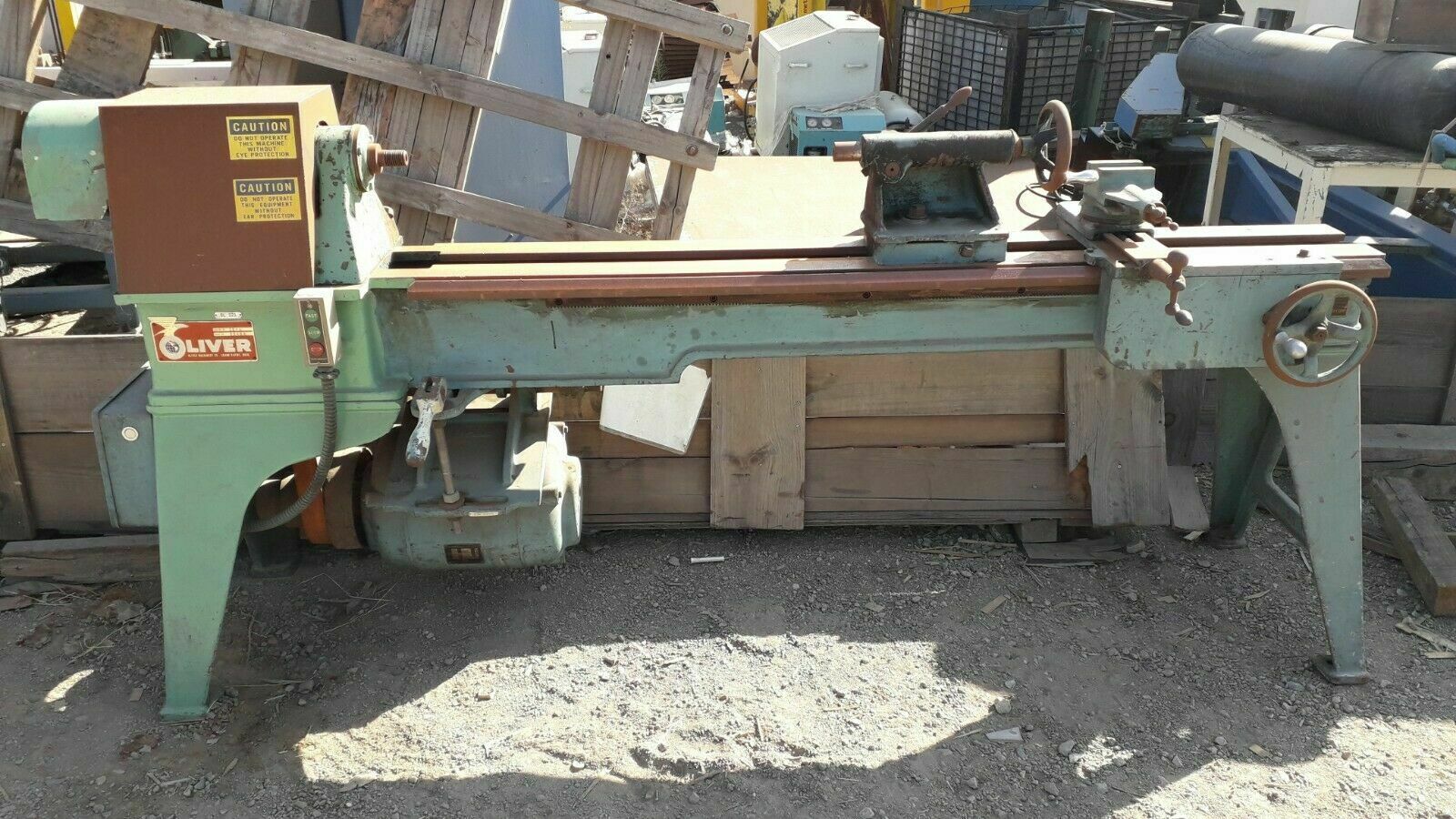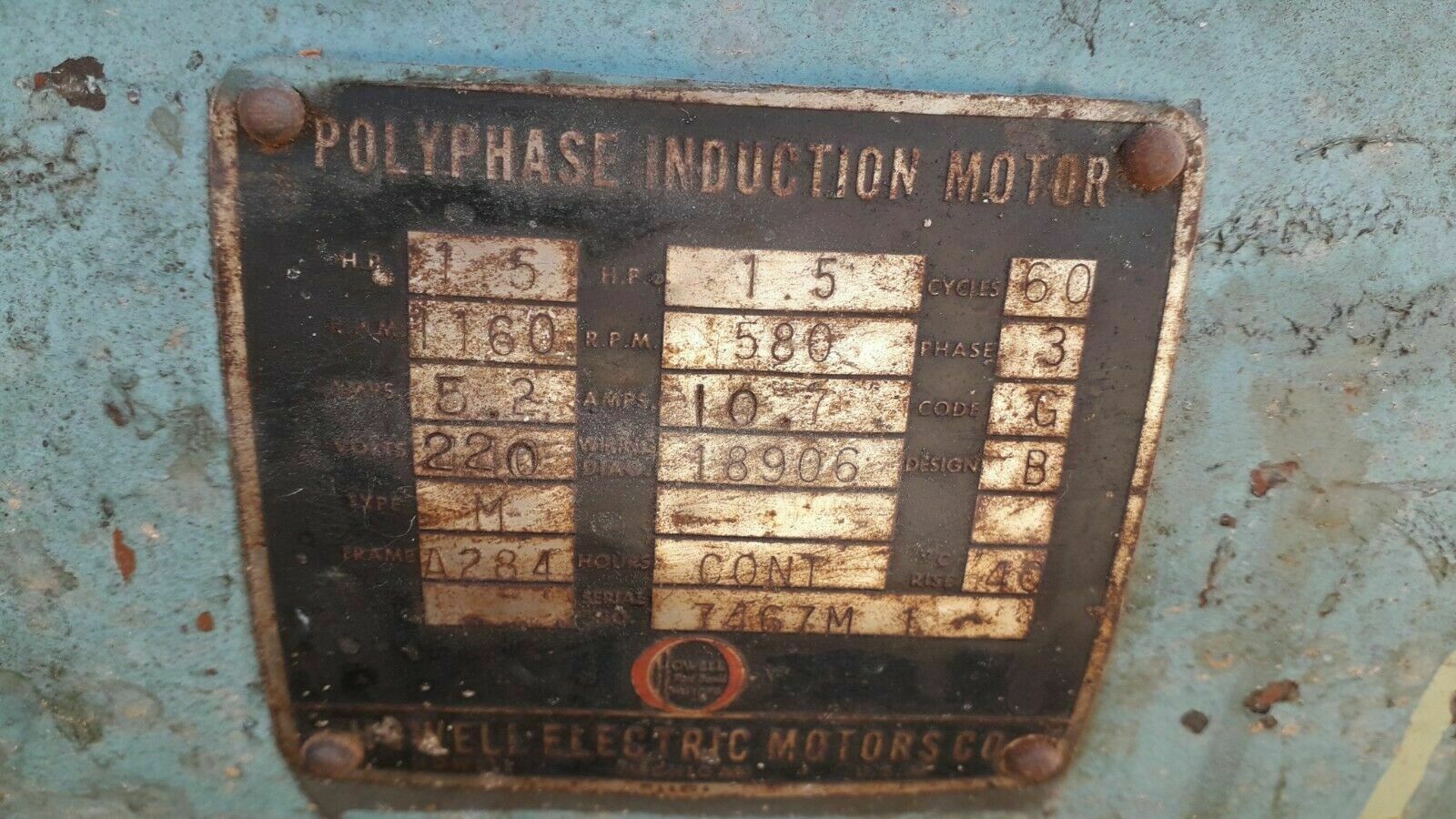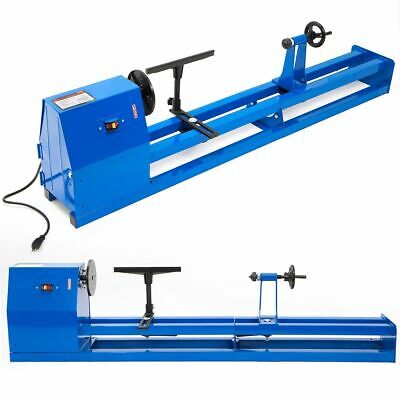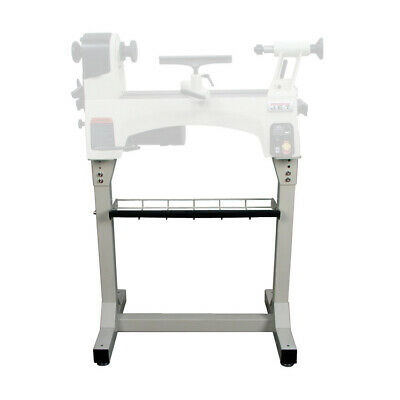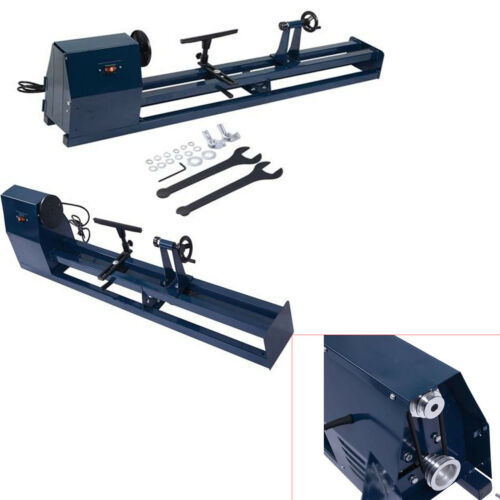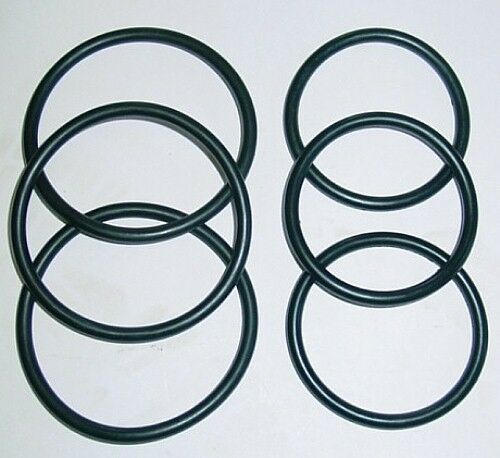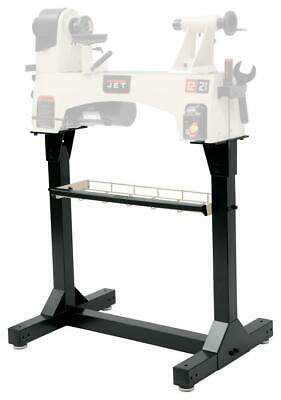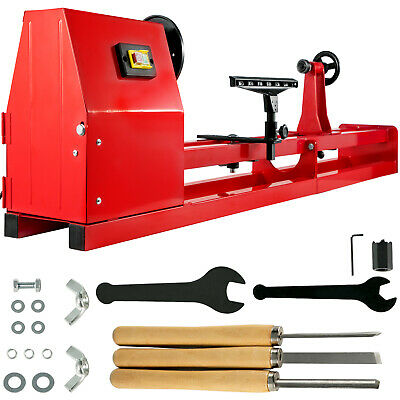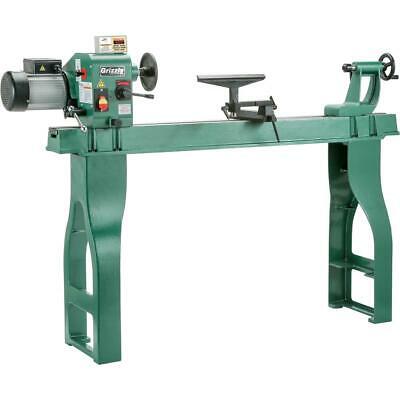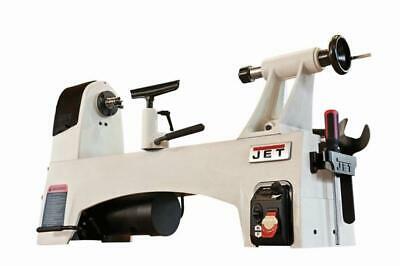-40%
1960 OLIVER WOOD LATHE LONG BED No.20-A PATTERN MAKERS WOOD TURNING LATHE_UNIQUE
$ 2613.6
- Description
- Size Guide
Description
TJ LISTING SERVICES*SURPLUS & MACHINERY SALES*
PRESENTS
For Sale:
1960 OLIVER WOOD LATHE LONG BED No.20-A PATTERN MAKERS WOOD TURNING LATHE_UNIQUE
REF # TJ-01070/J.V./ORANGE/
THIS INFO BELOW WAS TAKEN FROM AN OPEN INTERNET SOURCE:
Joseph W. Oliver was born in Oswego, New York, in 1864 and moved to Grand Rapids in 1878 at the age of 14. He became an apprentice machinist at the Bissell Carpet Sweeper Company and later at Butterworth & Lowe Co., which originally made wood trimmers.
The first wood trimmer was made in 1879 at Middletown, Connecticut, and patented by W.R. Fox. A wood trimmer or miter trimmer stands midway between a hand tool and a power machine tool. Hand or foot activated, two razor sharp knives, operating somewhat like a guillotine in a cast iron frame, offer controlled shaving of stock.
Oliver left Butterworth & Lowe and became a salesman for The Fox Machine Co. In 1890, certain that he could do better marketing his own trimmers, Oliver designed a new and more advanced line. By 1891 the Builders Iron Foundry, Providence, Rhode Island, was manufacturing the machines for Oliver's company, now called The American Machinery Company.
In 1896 Oliver made a personal tour of pattern shops all over England, Ireland, and Scotland, demonstrating trimmers and selling them from a flamboyant custom-painted horse drawn lorry. By 1898 Oliver, tiring of the headache of jobbing the work out, decided it was high time American built the trimmers itself; he opened the companyís first factory in a basement shop.
In 1903 it was decided that the company's name needed to be changed, since it was being confused with the huge American Wood Working Machinery Co. of Rochester, New York, a major competitor. "The Oliver Machinery Co." was chosen. Employees in 1903 numbered about 25. The average hourly wage was 17 cents an hour for a 60 hour week. That same year Oliver moved into and even larger factory.
The company was incorporated January 7, 1907, with capital consisting of 0,000 in common shares and ,000 in preferred stock. The net worth of the company was listed as 6,152 on October 1, 1907. Still working 60 hour weeks, the average Oliver worker earned 21 cents per hour.
Oliver began putting serial numbers on its machinery in 1907. Serial Number 1 went on a Type B tablesaw. (As a point of reference, the serial number of the first machine shipped after January 1, 1990 was 207,675.)
Perhaps the greatest innovation in woodworking machinery was the introduction of the round cutterhead. The head was first developed in England (1901) and later in Germany, where it was patented January 21, 1908. Oliver purchased the German patent the same year. Every circular safety cylinder in the United States today is basically a copy of the one brought out by Oliver.
On December 31, 1919, Oliver Machinery, now owned by V.M. Tuthill and F.A. and R.F. Baldwin, purchased the ownersí own company - Baldwin, Tuthill & Bolton ñ factory, inventory, and equipment. In other words, the companies merged, becoming the Oliver Machinery Co. The title "Oliver" was retained, since it was a well established and respected name.
Oliver calculated that more than 1500 high, grammar, and intermediate schools with manual training departments used Oliver Machinery. Between 1908 and 1922, for example, the Minneapolis Board of Education purchased over 264 Oliver machines.
In 1929 the company took in 9406 orders. The depression did not hurt Oliver immediately, but eventually, sales began to slacken. By 1931 Oliver was suffering. The bottom was hit in 1932 and 1933; business had fallen off by 92%!
Oliver gradually emerged from the Depression, overcoming a sudden recession in 1937 and a small dip in sales in 1944 and 1945. Oliver calculated in 1950 that its machinery was being used in over 2200 vocational shops. In that year, Oliver employed a total of 500 people, about 200 of whom were engaged in building woodworking machinery, earning .77 per hour for a 40 hour week.
Through the years Oliver has dropped and added various machines to its product line. By 1994, the company had produced over 150,000 machines and Oliver estimated that over 75,000 were still in operation on a daily basis worldwide.
Perhaps the best compliment to its line was made by retired shop teacher Stephen Rose of Tucson, Arizona who described Oliver's lathes to me as "boy-proof." A true test of durability if there ever was one!
*~ THE ITEM IS SOLD ON "AS-DESCRIBED-AS-AVAILABLE" BASIS_LOOKS AS DESCRIBED ON THE PICTURES BELOW_GREAT DEAL__SERIOUS OFFERS VERY WELCOME!_FIRST COME - FIRST SERVED!~*THIS ITEM IS SOLD ON "AS-DESCRIBED-AS-AVAILABLE" BASIS. BUYER HAS 30-DAY MONEY BACK PRIVILEGE~
Selling USED STOCK
*WE WILL ARRANGE A RELIABLE CARRIER FOR YOU~ YOUR POSITIVE FEEDBACK IS HIGHLY APPRECIATED~
Track Page Views With
Auctiva's FREE Counter
